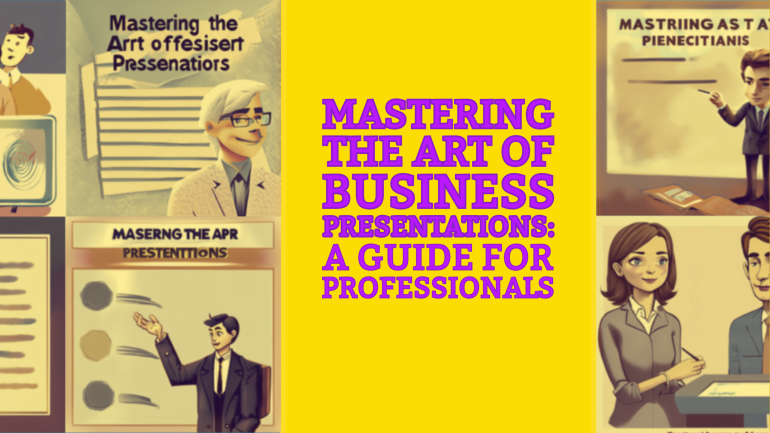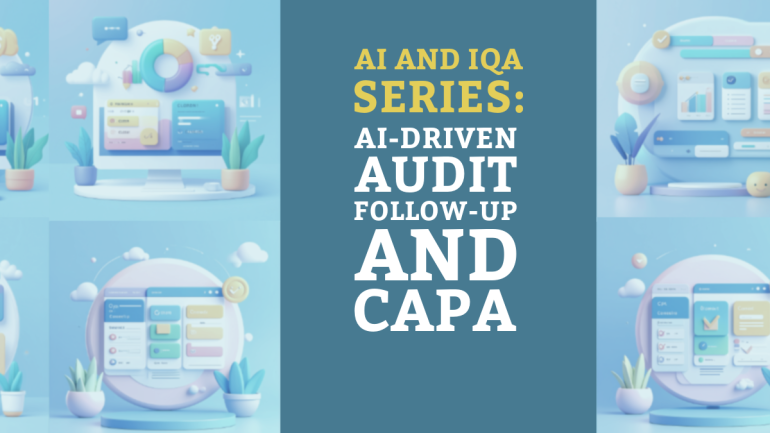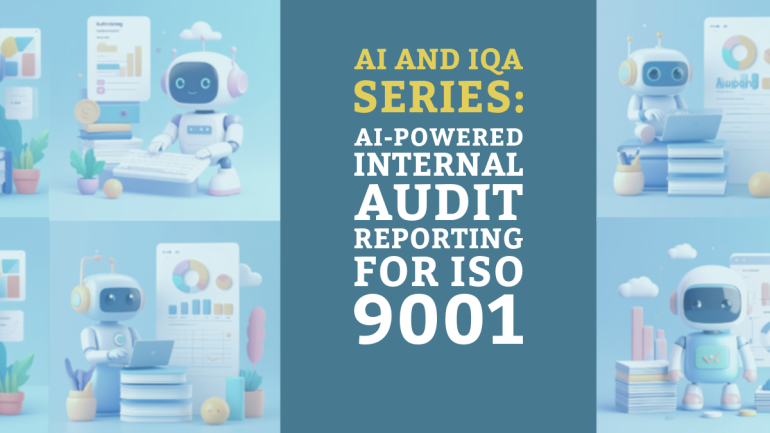Table of Contents
TL;DR: Effective Presentation Skills for Business Professionals
- Storytelling Engages Audiences: Utilizing narrative techniques to make business presentations memorable and impactful.
- Structuring for Impact: Organizing content strategically to captivate and persuade audiences effectively.
- Mastering Delivery: Enhancing verbal and non-verbal communication to reinforce the presentation’s message.
- Technology Enhances Delivery: Leveraging modern tools and multimedia to elevate the audience’s experience.
Introduction
Imagine walking into a room, the air charged with anticipation, every eye fixed on you. This is your moment to shine, to persuade, to lead. In the business world, the power of an effective presentation is undeniable. It’s the difference between sealing a deal or watching it slip through your fingers, between inspiring your team or leaving them unmoved. A great presentation goes beyond the mere transmission of data; it’s an art form that combines clarity, engagement, and persuasion, transforming passive listeners into active participants. This guide embarks on a journey to unravel the secrets behind captivating presentations, providing you with the tools to not just communicate, but to connect and convince.
Understanding Presentation Dynamics
The essence of a compelling presentation lies in its ability to transport the audience on a narrative journey, with the presenter serving as the quintessential guide. This voyage of discovery hinges on several critical elements: the clarity of the message, the allure of the content, and a robust narrative structure. Picture a presentation as a meticulously plotted expedition, where the terrain is your content and your audience, the eager explorers. Your mission as the guide is not only to navigate this terrain with expertise but to make the journey memorable and engaging. It’s about crafting an experience that resonates, leaving your audience enlightened and inspired.

The Role of Storytelling in Engaging Your Audience
At the heart of every memorable presentation lies the timeless art of storytelling. This technique transcends the traditional boundaries of business communication, tapping into the universal human affinity for stories. Storytelling weaves facts and figures into a compelling narrative, breathing life into abstract concepts and fostering a deep, emotional connection with the audience. From the gripping arcs of TED Talks to the persuasive narratives behind groundbreaking marketing campaigns, storytelling in a business context demonstrates its unmatched power to captivate attention, evoke emotions, and etch messages into memory.
Preparing Your Presentation
The foundation of a powerful presentation is laid long before you step onto the stage; it begins with meticulous research and the judicious selection of content. This stage is critical for aligning your message with the interests and expectations of your audience, ensuring that every piece of information presented is both relevant and engaging. It’s about sifting through a wealth of data to curate content that supports your objectives, enriching your narrative with insights that speak directly to your audience’s needs and curiosities. A well-prepared presentation is a tailored experience, crafted with precision to inform, persuade, and inspire.
Structuring Your Presentation for Impact
A presentation’s impact is significantly amplified by its structure, an architectural blueprint that guides the audience through the narrative with purpose and clarity. Techniques like the ‘Pyramid Principle’ or the ‘Three-Act Structure’ offer strategic frameworks for organizing content, ensuring a logical flow that builds anticipation and delivers satisfying conclusions. By adopting such models, presenters can create a compelling storyline, with each segment seamlessly leading to the next, culminating in a persuasive and memorable message. This structural coherence is crucial for capturing and maintaining audience interest, making every moment count.
Presentation Delivery Techniques
The delivery of a presentation is where skill meets artistry. Mastery over verbal communication—tone, pace, and articulation—can significantly enhance the persuasiveness of your message. Incorporating practices such as voice modulation and strategic pauses not only aids in emphasizing key points but also in maintaining audience engagement. Similarly, effective use of body language and visual aids can reinforce your message, adding an extra layer of clarity and interest. However, presenters must tread carefully, ensuring that these aids complement rather than overshadow the essence of the presentation. The art of delivery lies in the balance, utilizing every tool at your disposal to communicate with confidence and precision.
Engaging Your Audience
Keeping the audience engaged is both a challenge and an opportunity. Techniques such as polling, posing questions, or introducing unexpected twists can transform a monologue into a dialogue, making the presentation a collaborative experience. These strategies not only captivate attention but also foster an interactive environment where the audience feels valued and involved. Engagement is the currency of effective presentations, with each interactive element enriching the audience’s journey, making the message not just heard, but felt and remembered.
Handling Questions and Feedback
The question and feedback segment of a presentation is not a hurdle but a golden opportunity to deepen engagement and demonstrate expertise. Encouraging questions invites audience participation, turning passive listeners into active contributors. This interaction provides a platform for clarifying doubts, addressing concerns, and further elaborating on key points, enriching the overall presentation experience. By welcoming feedback with openness and confidence, presenters can foster a rapport with the audience, reinforcing the message and leaving a lasting impression.
Overcoming Presentation Anxiety
Presentation anxiety is a common challenge, yet it can be mitigated with thorough preparation and practice. Familiarity with the content, the flow of the presentation, and the operational aspects of technology can significantly boost confidence. Rehearsals, whether in front of a mirror or a supportive audience, offer a safe space to refine your delivery and iron out any kinks. On the day, techniques such as deep breathing, positive visualization, and mindful presence can help calm nerves, allowing you to present with poise and assurance. Remember, confidence is not the absence of fear, but the mastery over it.
Leveraging Technology in Presentations
Technology has revolutionized the way presentations are crafted and delivered. Modern presentation software offers an array of features designed to captivate and engage, from dynamic slide transitions to interactive polls. Furthermore, the integration of multimedia elements—videos, audio clips, and animations—can elevate the sensory experience, making the presentation not just informative, but immersive. However, the key lies in strategic use, ensuring that technology serves to enhance the narrative rather than detract from the message. In the digital age, a presenter’s savvy with technology can significantly impact the effectiveness of their communication.
Practicing and Improving Your Presentation Skills
The path to presentation excellence is one of continuous learning and refinement. Seeking constructive feedback from peers, mentors, or audience members offers valuable insights into areas for improvement. Engaging in regular practice and experimenting with new techniques can help hone your skills, making each presentation better than the last. Additionally, leveraging resources such as online courses, workshops, and reading material can provide fresh perspectives and tools for enhancing your delivery. The journey of improving presentation skills is ongoing, marked by a commitment to excellence and a willingness to evolve.
Real-Life Success Stories
The transformative power of effective presentation skills is best illustrated through real-life success stories. From entrepreneurs who have pitched their way to investment, to executives who have inspired change within their organizations, these case studies underscore the strategic importance of presentation skills. By analyzing the methods and techniques employed by successful presenters, readers can gain practical insights into crafting and delivering messages that resonate, persuade, and inspire, ultimately achieving their professional goals.
The Future of Business Presentations
The landscape of business presentations is constantly evolving, with emerging technologies such as virtual reality, augmented reality, and AI analytics set to redefine audience engagement. These advancements promise to deliver more immersive and interactive presentation experiences, challenging presenters to adapt and innovate. Staying abreast of these trends and incorporating new technologies into your presentation strategy can position you at the forefront of effective communication. As the medium evolves, the essence of a great presentation—clear, engaging, and persuasive communication—remains constant, underlining the enduring value of mastering presentation skills.
Conclusion
Mastering the art of presentation is not merely a professional asset but a cornerstone of personal growth and success. Effective presentation skills empower individuals to convey their ideas with clarity, passion, and impact, making a lasting impression on their audience. As we navigate the complexities of business communication, the pursuit of presentation excellence emerges as a journey of continuous improvement and adaptation. By embracing this journey, professionals can unlock their full potential, transforming not only their career trajectory but also enriching their personal development. The future belongs to those who can present their ideas with conviction and charisma, making effective presentation skills a key to unlocking that future.
FAQs
Q1: How can I make my presentations more engaging?
A1: To make your presentations more engaging, integrate storytelling to connect with your audience on an emotional level. Use visual aids and interactive elements like polls or Q&A sessions to maintain interest. Tailoring your content to the audience’s interests and keeping your delivery dynamic with variations in tone and pace also helps keep your audience engaged.
Q2: What are some common mistakes to avoid in business presentations?
A2: Common mistakes include overloading slides with text, failing to practice and becoming too reliant on notes, not tailoring the presentation to the audience’s needs, and neglecting the importance of a strong opening and closing. Avoiding these pitfalls can significantly improve the quality of your presentations.
Q3: How much preparation time is typically needed for a good presentation?
A3: The preparation time for a presentation can vary widely depending on the complexity of the topic and the length of the presentation. As a general rule, you should spend at least one hour of preparation for every minute of your presentation. This includes research, slide creation, and practice.
Q4: Can you recommend any tools or software for creating impactful presentations?
A4: Yes, several tools can help create impactful presentations. PowerPoint is a classic choice, but newer tools like Prezi offer dynamic, zoomable canvases that can make presentations more engaging. Canva and Adobe Spark are great for creating visually appealing slides, and Slido or Mentimeter can add interactivity with live polls and quizzes.
Q5: How do I handle difficult questions during a presentation?
A5: To handle difficult questions, listen carefully and take a moment to compose your thoughts before responding. If you don’t know the answer, it’s okay to admit it; offer to follow up after the presentation with more information. Staying calm and respectful, regardless of the question’s nature, is key.





